I am a newbie working with streamflow duration curves and the function fdc.
I am working with more than 300 series and I am interested in saving the low quartile threshold Qlow.thr value that appears in the plot generated:
Here is the reproducible example:
dat <- c(13.05, 90.29, 5.68, 49.13, 26.39, 15.06, 23.39, 17.98, 4.21, 2.51, 38.29, 8.57, 2.48 , 3.78, 18.09 ,15.16, 13.46, 8.69, 6.85, 11.97, 12.10, 9.87 ,21.89, 2.60 ,2.40, 27.40, 4.94, 83.17 ,12.10, 5.08 ,12.42, 6.19 ,3.60 ,32.58, 53.69, 38.49,3.61, 14.84, 34.48, 1.91, 21.79, 31.53, 6.70, 9.52, 22.64, 1.80 , 8.13, 10.60, 12.73, 4.17, 6.70 ,16.45)
fdc(dat,plot = T,lQ.thr=0.8,ylab='Hm3',main='Upstream monthly duration curve',thr.shw=TRUE)
The fdc function returns a vector of probabilities, but I am not sure how to convert these probabilities to the original units and select the 80% percentile value expressed in Hm3 as I would do with pnorm, for example, in case of working with normal probabilities.
Thank you so much.

